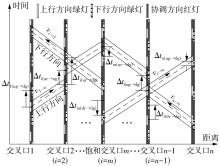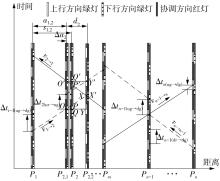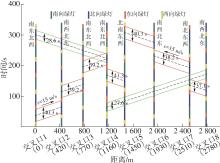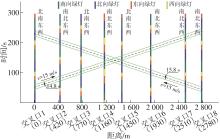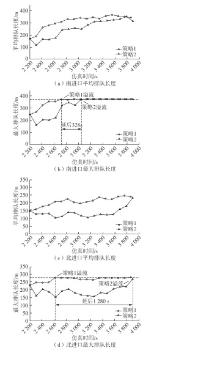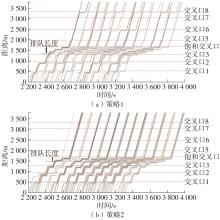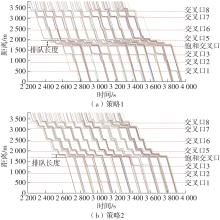华南理工大学学报(自然科学版) ›› 2022, Vol. 50 ›› Issue (9): 1-11.doi: 10.12141/j.issn.1000-565X.210809
所属专题: 2022年交通运输工程
饱和交叉口的双向红绿波协调设计数解算法
卢凯1,2, 赵世杰1, 吴焕3, 等
- 1.华南理工大学 土木与交通学院/亚热带建筑科学国家重点实验室,广东 广州 510640
2.人工智能与数字经济广东省实验室(广州),广东 广州 510335
3.深圳市城市交通规划设计研究中心股份有限公司 广东省交通信息工程技术研究 中心,广东 深圳 518021
Algebraic Method of Coordination Design for Bi-directional Red and Green Waves of Saturated Intersection
LU Kai1,2, ZHAO Shijie1, WU Huan3, et al
- 1.School of Civil Engineering and Transportation/State Key Laboratory of Subtropical Building Science,South China University of Technology,Guangzhou 510640,Guangdong,China
2.Guangzhou Lab of Artificial Intelligence and Digital Economy,Guangzhou 510330,Guangdong,China
3.Shenzhen Urban Transport Planning Center Co. Ltd. ,Guangdong Transport Information Engineering Technology Research Center,Shenzhen 518021,Guangdong,China
摘要:
当干道上出现饱和交叉口时,需对饱和交叉口驶入方向进行截流调控以免路段排队溢流,对驶出方向进行绿波疏导以便车流迅速驶离。针对饱和交叉口不同方向的协调控制需求,本文给出了一种干道双向红绿波协调设计数解算法。首先,利用时距分析图推导了交叉口之间理想间距的计算通式,给出了交叉口协调相位时间中心偏移率的计算方法;然后,针对不同公共信号周期取值,分别计算各个交叉口在不同信号相位设置方式下的协调相位时间中心偏移率,将绝对值最小的中心偏移率所对应的相位设置方式作为各交叉口的优选相位;接着,比较不同公共信号周期取值下优选相位所对应的最大中心偏移率之差,对应最大中心偏移率之差最小的公共信号周期取值即为最佳公共信号周期;最后,结合红绿波设计特点给出了微调相位差的优化方法,使得交叉口绿波带方向的中心偏移率最小,从而确保干道双向获得较大的红绿波带宽。案例分析表明,本文算法设计得到的双向红绿波协调控制方案相比于双向绿波协调控制方案,在保证驶入饱和交叉口方向存在最大红波带的同时,可以使得驶离饱和交叉口方向的绿波带宽明显增加。VISSIM仿真实验发现,本文方法设计得到的方案既能够缩短饱和交叉口的最大排队长度23.1%、平均排队长度33.8%,推迟饱和交叉口车辆排队溢出至上游交叉口的时间,也能够使饱和交叉口驶出车辆在下游路段的行程时间与停车次数分别减少17.5%与76.3%,实现了对于饱和交叉口的溢流防控与绿波疏导。
中图分类号:
